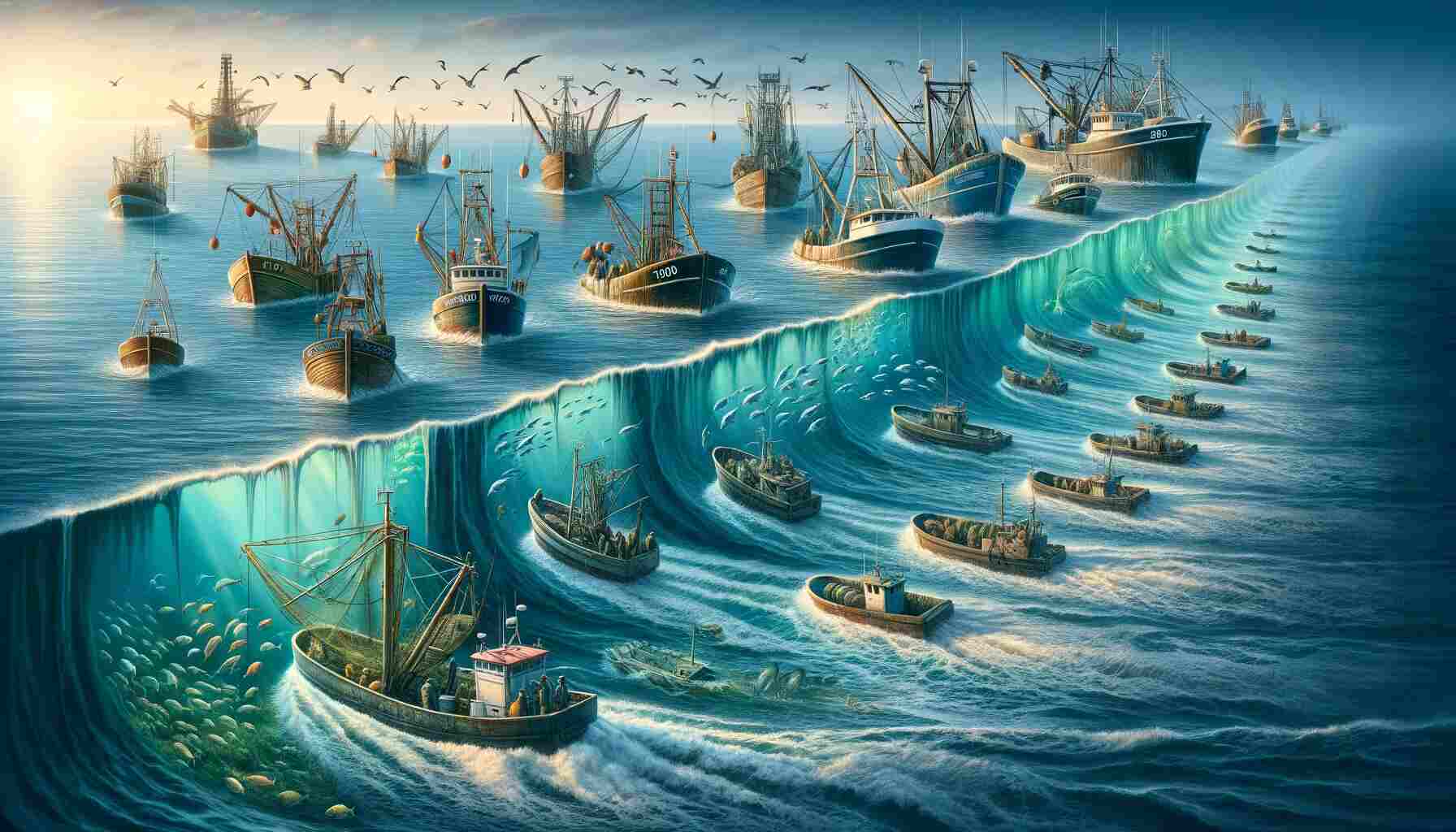The world’s oceans have been a bedrock of human civilization, providing sustenance, economic opportunity, and a way of life for countless generations. However, as our technological capabilities and global demands have expanded, so too has the scale and impact of our maritime activities. A recent study titled “A database of mapped global fishing activity 1950–2017” published in Scientific Data volume 11, Article number: 48 (2024), provides an unprecedented look into the evolution of global fishing fleets over 67 years. This article delves into the significant trends and turning points in global fishing practices revealed by this comprehensive database and discusses their implications for marine biodiversity and sustainability.
The Early Years: Post-War Expansion (1950-1970)
In the wake of the Second World War, the world saw a period of rapid industrialization and technological advancement. The fishing industry was no exception. Initially composed of numerous small, local fleets, the global fishing landscape began to shift dramatically. Advancements in navigation, vessel design, and fishing gear allowed fleets to travel farther and fish deeper. The database reveals a significant increase in the number and capacity of vessels during these years, marking the beginning of a trend that would dramatically alter marine ecosystems worldwide.
The Boom and Regulation (1970-1990)
As the fleets grew, so did the catches. The 1970s and 1980s were characterized by a fishing boom. However, this rapid expansion was not without consequences. Overfishing led to the decline of several fish stocks, prompting the international community to take notice. This period saw the inception of various regulations and the establishment of exclusive economic zones (EEZs), fundamentally changing the global fishing map. The study provides detailed insights into how these regulations affected fleet sizes and fishing practices, highlighting both successes and ongoing challenges.
Technological Advancement and Globalization (1990-2010)
The advent of satellite technology and improved fishing gear in the late 20th century ushered in a new era of fishing. Vessels could now locate fish with remarkable accuracy and efficiency. The database shows a notable shift during this period towards larger, more technologically advanced fleets, particularly in developed nations. Meanwhile, globalization opened up new markets and increased demand, further intensifying fishing efforts. This period’s data underscores the increasing pressure on fish stocks and the urgent need for sustainable management practices.
The Recent Decade: Awareness and Uncertainty (2010-2017)
The most recent data from the study reflects a period of heightened awareness and increasing uncertainty. Environmental concerns and a better understanding of ecosystems have led to more stringent regulations and a push towards sustainable practices. Innovations in tracking and data analysis, as evidenced by the very existence of this database, offer new tools for management and conservation. However, the data also highlights the persistence of illegal, unreported, and unregulated (IUU) fishing, the growing impact of climate change, and the continued pressure on marine resources.
Implications for the Future
The evolution of global fishing fleets over the past 67 years has been nothing short of dramatic. From small, localized operations to massive, technologically sophisticated fleets with a global reach, the industry has transformed in ways that were unimaginable in the mid-20th century. This comprehensive database not only provides a detailed historical account but also serves as a crucial tool for understanding the impacts of these changes and for planning a sustainable path forward.
As we navigate these uncharted waters, the lessons from the past and the data from the present are invaluable. They provide a map of where we’ve been and a compass for where we need to go. Ensuring the sustainability of our oceans and the myriad lives they support requires an understanding of the intricate dance between human activity and the natural world—a dance that this database documents in unparalleled detail.
Conclusion
The “A database of mapped global fishing activity 1950–2017” study is more than just a collection of data; it’s a narrative of human interaction with the vast and vital world of our oceans. As we look to the future, the insights gained from this research will be critical in guiding sustainable practices, informing policy, and ensuring that the next 67 years of fishing activity contribute to the health and vitality of marine ecosystems worldwide.
For a deeper dive into this comprehensive database and to explore the detailed data it provides, visit Nature.
This article is inspired by the study “A Database of Mapped Global Fishing Activity 1950–2017” published in Scientific Data Volume 11, Article number: 48 (2024).




